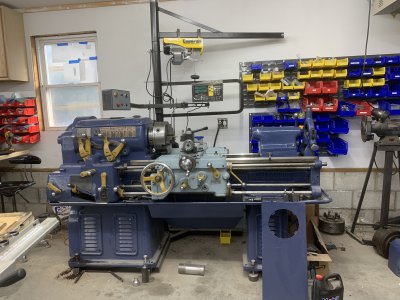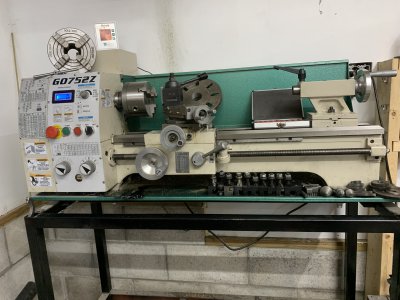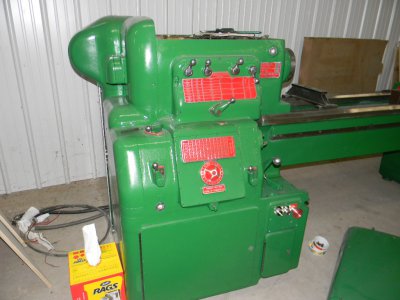- Joined
- Sep 28, 2013
- Messages
- 4,301
that jib crane is really sweet, that'll make your life so much easier. Keep up with the rebuild updates - I love reading them and they give me inspiration to keep plugging away about my South Bend.

For me, rebuilding the machines is a great way to appreciate how they work, the limitations, and how to get the best use out of them. Once I've gone through everything like this, using it becomes a lot more intuitive. And more fun, because I take a lot of satisfaction out of knowing I contributed to fixing it up. My grandfather was a machinist, and this is the era of machine he would have used. And damn, I know when I'm done I'll have a machine that would have cost at least $10k to buy new. Of course I'd guess I have at least $5k in fixing this up, new motor and VFD, bearings, paint, metal for the crane, chucks, etc. I'm enjoying it though, and that's what matters.that jib crane is really sweet, that'll make your life so much easier. Keep up with the rebuild updates - I love reading them and they give me inspiration to keep plugging away about my South Bend.
Maybe what I was trying to say wasn't clear. I meant that I'll have less than $10k in cost not counting my time, and have a machine that is significantly better than any lathe I could buy new today for $10k. But yeah, these things were not cheap when new.Stan at BarZ posted the receipt for his Monarch. IIRC, it was over $5k in 1950. You could buy a Cadillac or a nice starter home in those days for that kind of money.
Sent from my iPhone using Tapatalk

OK, a starter home in Northern California (North of Sacramento) is probably $250,000 to $325,000. A doghouse in the San Francisco Bay area is over a million.$5k in 1950. You could buy a Cadillac or a nice starter home in those days for that kind of money.

